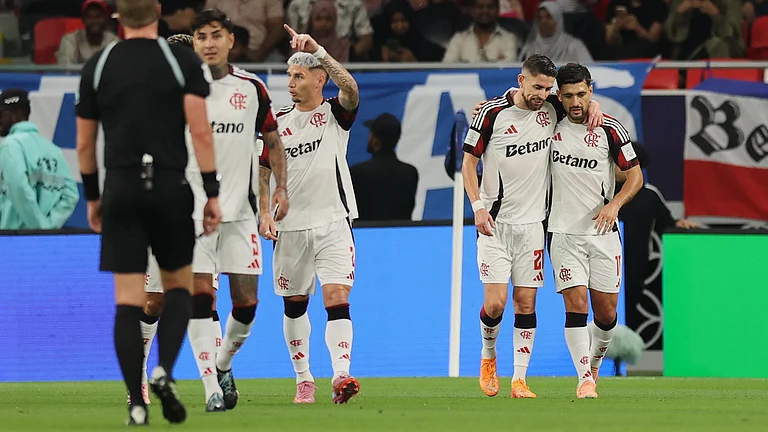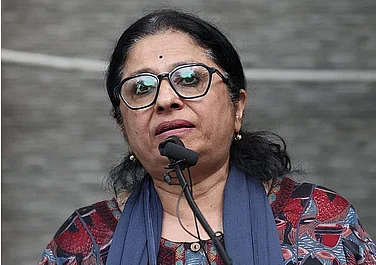“Is it a Hrishikesh Mukherjee film? Then we can all go and watch it together,” the head of the family would breathe easy. The name ‘Hrishikesh Mukherjee’ on the poster was a ‘green channel’ for comfortable family viewing served with innocent humor, great music, calmer melodrama, non-toxic family squabbles and elegant romance. He made quiet films about issues confronting the modest aspirations of the ordinary Indian middle-class. As Film expert Kaushik Bhaumik clarifies, “Their aspirations were not consumerist unlike a Vijay of Deewar.”
What genre does one classify Hrishikesh Mukherjee’s films under? His films had none of the stock commercial magnets like screechy action, visceral violence, exotic locations, titillating dance sequences or double-meaning jokes. Neither were his films of the arthouse variety which are identified by their abstractness in expression, complicated camera angles, complex editing and absence of popular stars, flamboyance, flashiness or music. Meant essentially for the students or connoisseurs of cinema, art films have very limited popular reach. Hrishi da’s narratives were simple, linear, and definite, and easy for the masses to understand who flocked in droves.
So, did Hrishikesh Mukherjee belong somewhere in between these extremes, commonly referred to as ‘parallel’ cinema or ‘middle-of-the road’ cinema? Firstly, the two are not synonymous. Kaushik Bhaumik sums it up, “Parallel cinema deals with larger societal issues with political overtones whereas middle-of-the-road cinema deals with the tensions of the modern (often urban) Indian middle class.” Examples of parallel cinema would be Govind Nihalani’s ‘Party’ (1984), ‘Droh Kaal’ (1994) and ‘1084 ki Maa’ (1998) which focused on Naxalites and their ideological clashes with the state. N. Chandra’s ‘Ankush’ (1986) that dealt with the frustration of the unemployed youth and his ‘Aghaat’ (1985) about militant unionism in Bombay’s cotton mills, Shyam Benegal’s ‘Ankur’ (1974), Nihalani’s ‘Aakrosh’ (1980) which portrayed exploitation of the disempowered villagers by the village honchos would also come under parallel cinema.
Examples of ‘middle-of-the-road’ would be ‘Chhoti si Baat’ (1976), ‘Chitchor’ (1976), ‘Rajnigandha’ (1974) and ‘Piya ka Ghar’ (1972) — all by Basu Chatterji. ‘Geet Gaata Chal’ (1975). ‘Nadiya ke Paar’ (1982), ‘Dulhan Wahi jo Piya Man Bhaye’ (1977) from the Barjatyas would also qualify as middle-road. All these were quiet films too, very similar to Hrishikesh Mukherjee’s. But…. notice that the lead actors of these middle-road films featured non-star actors like Amol Palekar, Anil Dhawan, Sachin, Vidya Sinha, Zarina Wahab, Prem Kishan, Rameshwari. But Hrishikesh Mukherjee almost always needed stars — Dilip Kumar, Kishore Kumar, Suchitra Sen, Nutan, Raj Kapoor, Sharmila Tagore, Rajesh Khanna, Waheeda Rehman, Jaya Bhaduri, Dharmendra, Amitabh Bachchan, Utpal Dutt … and Amol Palekar only after Basu Chatterji had made him a star.
So, Hrishikesh Mukherjee was a mainstream filmmaker of the ‘quiet’ variety but with big stars. Basu Chatterji created stars out of thin air while Hrishikesh Mukherji needed support of established stars. In fact, his dependance on stars came in the way of bold storytelling. A strong context like labor union problems in ‘Namak Haraam’ (1973) got overwhelmed by the friendship-gone-sour story track. Likewise, ‘Bemisal’ (1982) lost an opportunity at bold depiction of corrupt medical practices, ending up instead as an Amitabh Bachchan show. Dharmendra with his higher star value was cast as the first male lead in ‘Chupke Chupke’. It was a miscast. The Sherwood and Delhi University educated Amitabh Bachchan with his pure Hindi should have been cast as Prof Tripathi — both from ‘Professor’ and ‘Tripathi’ standpoints.
Hrishi da is perceived to be a maker of comedy films. True, there were comedy segments and humorous songs in most of his films. But only ‘Chupke Chupke’, ‘Gol Maal’, ‘Naram Garam’ (1981), ‘Khubsoorat’, ‘Rang Birangi’ (1983), and ‘Kisise na Kehna’ (1983) — just seven or eight out of his 40 odd films would count as outright comedies. ‘Bawarchi’ (1972) was about a joint family crumbling to pieces while ‘Guddi’ (1971) was about the coming-of-age of a star-struck young girl. Ironically, the one comedy film for which Hrishikesh Mukherjee deserved far more credit was ‘Sabse Bada Sukh’ (1972), India’s first adult comedy, and the one with the lowest profile cast of a ‘pre-Yaadon ki Baaraat’ Vijay Arora and Rabi Ghosh. History must also bestow credit on him for the first Angry Young Man of Hindi films — Satyapriya Acharya (Dharmendra) in ‘Satyakam’ (1969). Acharya is a young graduate who is disillusioned with systemic corruption. Hrishi da’s gallery includes deep tragedies like ‘Anand’, ‘Mili’, ‘Alaap’ (1977), ‘Naukri’ (1978) and sentimental sagas like ‘Anuradha’ (1960), ‘Chhaya’ (1961), ‘Anupama’ (1966) and ‘Jurmana’ (1979) while ‘Buddha Mil Gaya’ (1971) was a revenge story with multiple murders.
To sum up, Hrishikesh Mukherjee’s films fill us with a sense of contentedness. ‘Anand’ (1971) and ‘Mili’ (1975) showed how happiness can be juiced out of every living moment while to this day we long to be part of those laughter-filled households and bumbling friends in ‘Gol Maal’ (1979), ‘Chupke Chupke’ (1975), and ‘Khubsoorat’ (1980). As National Award-winning author Anirudha Bhattacharjee says, “A simple story told well sells.”
(Balaji Vittal is a National Award- an MAMI-winning author of five books. You can find him on Twitter @vittalbalaji. Views expressed are personal.)


























